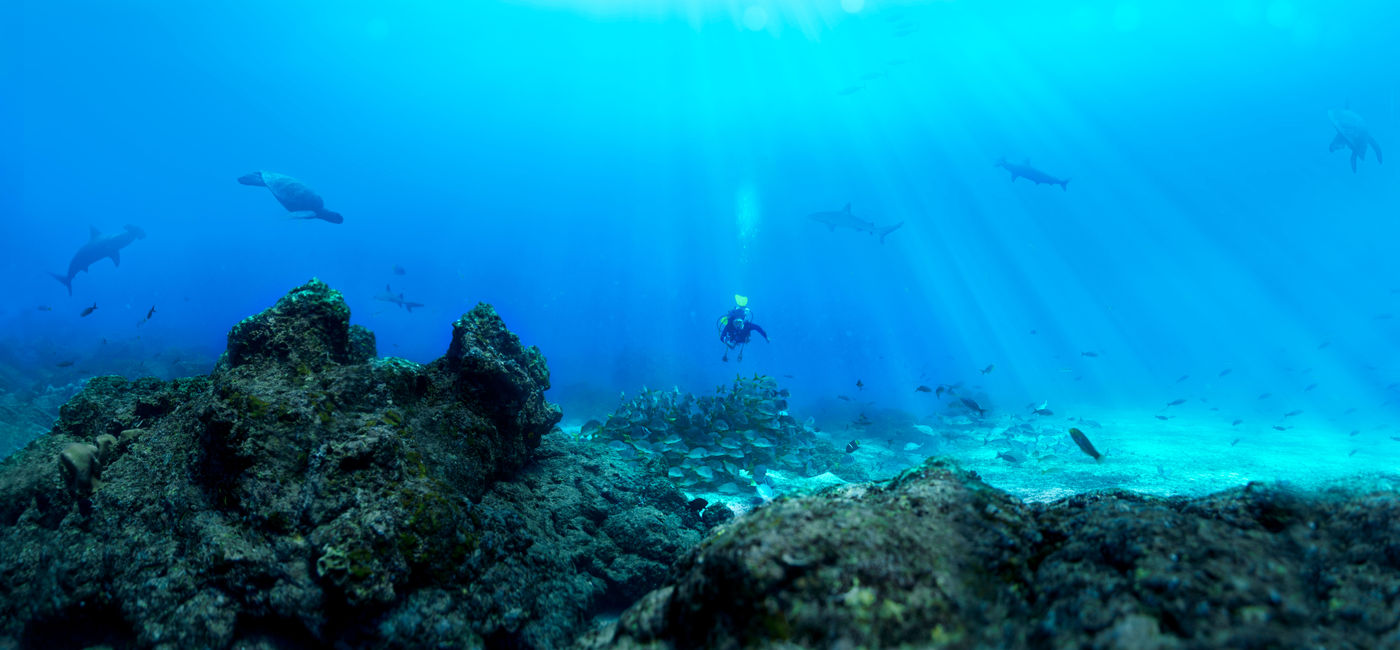What to Know Before Traveling to the Galápagos

The Galápagos Islands are a bucket-list destination for many travelers, bird lovers and nature enthusiasts, and it’s no wonder why: the biodiverse region of the world has been famous for centuries as a natural paradise.
Like all destinations, the islands offer a unique list of requirements and considerations for travelers heading to the destination.
The Basics
The Galápagos Islands are located off the coast of Ecuador and are accessible by plane from Quito or Guayaquil. Many travelers visit one of these cities for a day or two prior to flying into Baltra or San Cristobal, where the two main airports are located in the island chain.
Travelers staying on the mainland for a few days can explore the Ecuadorian Amazon, the Ecuadorian Andes or, in Quito, can discover Latin America’s best-preserved 16th-century historic center and UNESCO World Heritage Site.
San Cristobal Island, Santa Cruz Island, Isabela Island and Floreana Islands are the main islands that comprise the Galápagos Islands.
The best time to visit the islands is from June to December, when it’s their dry season. The peak tourist seasons are during the Christmas and New Year holidays, as well as from mid-June to September.
While the islands are a part of Ecuador, the US dollar is the main currency used, making it easy for American travelers.
“The Galápagos Islands are a unique and fragile place in terms of their ecosystem,” said Damon Corkin, founder and Travel Director for Andean Discovery, which also offers trips to the islands. “It is important to respect the rules and restrictions established to preserve the flora and fauna of the islands. Have a distance of 6 feet from the animals.”
Required Documents
Travelers are required to bring their passports and must be pre-approved prior to visiting the islands for a Galápagos immigration card. Some travelers may also be required to be vaccinated against yellow fever, though most Americans traveling to Quito and the islands will not need to be vaccinated for the disease. Check out Ecuador Travel to read the latest travel requirements.
As with all other international travel, travelers should also bring their COVID-19 vaccine cards with them.
“To preserve the natural balance of the archipelago, it is forbidden to introduce plants, animals, or any other type of biological material to the Galápagos Islands,” said Corkin. “Be sure to check your belongings before traveling and avoid bringing seeds, fruits, insects, or any other objects that may endanger the biodiversity of the place.”
Travel Methods
Travelers can choose to visit the islands with a land-based tour or on a cruise.
Many cruise lines offer itineraries to the region on purpose-built ships that are smaller due to the nature of the island chain, such as Lindblad Expeditions or the luxury cruise line Silversea. There’s also a wide price range for these trips, making it easy for travelers of many price ranges to find the best fit for them.
Travelers who are worried about transiting between the islands by boat or who want more flexibility in their trip can choose to take a land-based tour, sleeping on-island and transiting between a few of them to visit key attractions with a private guide.
Many travelers will also wonder: can children visit the islands, too? The answer is yes! Children will always come with different considerations, though many cruise lines and tours offer kid-friendly accommodations (though some will have age limits). Infants and younger children will find it harder to participate in some of the most rigorous excursion opportunities, it’s possible to visit the islands with children — and have an incredible family experience, too.
What to Pack When Visiting the Galápagos
Travelers should make sure to pack for a warm-weather trip, with coral reef-safe sunscreen, a brimmed hat, at least two swimming suits and water shoes to protect them from any coral or rocky underwater terrain. Travelers should also pack hiking boots for any land-based hiking excursion.
Land and cruise-based travelers should also consider bringing along something to help with seasickness, such as Sea-Bands or anti-nausea patches or pills that they can take in case they feel sick during transit or while onboard their cruise.
Any traveler visiting the islands during its wet season should also bring along waterproof shoes or boots, as well as a waterproof jacket.
Travelers should also bring along a camera to document their bucket-list vacation. It could be an adequate one inside of a phone, or travelers can splurge for a physical camera with an enhanced zoom lens to get better photos of far-off animals.
